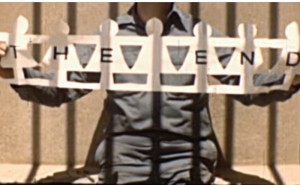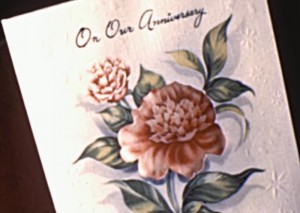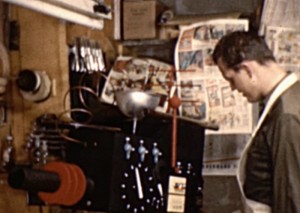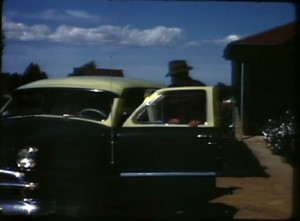"Item is an audio-visual production of Dr. Willinsky's trip to Israel. In the form of a travelogue, Willinsky accompanies footage of landmarks, ruins and the local population with audio commentary. The production includes a brief discussion of the formation of the state of Israel and features various cities, such as, Jerusalem and Tel-Aviv. Sadie [Willinsky] is occassionally spotted in the footage interacting with locals and visiting the homes of friends." Ontario Jewish Archives.
"Color film of the Turner children go a 'family' vacation. The children dressed as Ma, Pa, and child push a push cart to the Bryce Canyon National Park in Utah." Church History Library.
Frontiersman is a religious film sponsored by the British and Foreign Bible Society and produced by Crawley Films.
"Film about the Woodley family’s attempts at Sunday morning relaxation when the Woodley boys are away at Sunday School." Library and Archives Canada.

A woman grows frustrated with her husband's commitment to his various hobbies, which seem to take precedence over their marriage.

Comedy about a psychiatric hospital patient who attempts an escape. Two inept hospital employees fail to retrieve the patient, allowing him to encounter a child whose scooter offers a chance at a faster getaway.

A man is late for his anniversary dinner after getting drunk at an "amateur magician's club." He attempts to make up for it by surprising his wife with gifts, but the gifts turn out to be magic tricks which further infuriate her. The man's magic tricks are accomplished via trick photography.

After celebrating his fourth wedding anniversary, a man becomes obsessed with building a homemade weapon of mass destruction. The man's efforts reach a breakthrough after the couple celebrates their fifth anniversary.
"Film about three little boys, played by Doug, Bill and Lorne Woodley, the sons of Charles Devenish Woodley, visiting the Canadian National Exhibition in Toronto on a sunny day." Library and Archives Canada.

"All In A Day - Consistently good photography marks this humorous document of the trials and tribulations that beset a man who goes fishing despite the objections of his wife. Overruling his wife's plea that he take her to visit her mother, the man sets out on his trip early the next morning. His first disappointment comes when the pal who was to accompany him bows out. Setting out alone, trouble comes in bunches. He gets a ticket for speeding, then a flat tire, and when he arrives at the lake selected for fishing, the boat is flooded with water. After bailing it out, the man rows out on the lake, forgetting his lunch, tackle, etc., and he must return to shore - further building up his state of high dudgeon. Before night falls, he's fallen in the lake, not to mention the fact he caught nary a fish, so he returns home a sadder but wiser man. But even then, his troubles are not over. His wife, who promised he'd 'be sorry' for going on the trip, locks him out of the house. In the closing scene he finds solace in his little son, who remains his only friend. One outstanding feature of this film is the maker's ability to cut scenes as he shoots. Result is each scene dovetails snugly with the next, and this greatly simplified, we are sure, the task of editing the film." American Cinematographer, May. 1952, 211.
Total Pages: 299